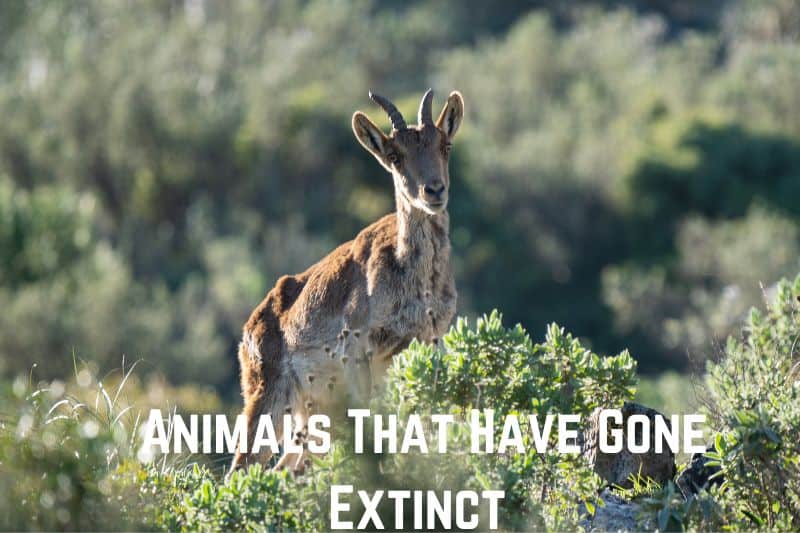Throughout history, Earth’s rich biodiversity has been shaped by countless species’ continuous rise, fall, and evolution. Unfortunately, not all creatures thrive and adapt to the ever-changing environment, leading to their eventual disappearance. In this article, you’ll discover 15+ fascinating animals that have sadly gone extinct.
There have been five major mass extinctions in the last 540 million years. These five major extinctions are: Ordovician-Silurian mass extinction, Late Devonian mass extinction, Permian mass extinction, Triassic-Jurassic mass extinction and Cretaceous-Tertiary mass extinction. The current crisis is entirely caused by humans and we could see several species going extinct in the next few decades.
Learning about these 15+ extinct animals is not just about looking back at history – it’s also about cherishing and preserving the biodiversity that still exists today. Through awareness and conservation efforts, you can contribute to protecting endangered species and ensuring that Earth remains home to a vibrant tapestry of life for generations to come.
15+ Animals That Have Gone Extinct Due To Deforestation
As you read this list, it is also important to note how many of these species die out because their habitat is destroyed by development or pollution. Below are 15 extinct species that you would not see anymore.
1. Great Auk
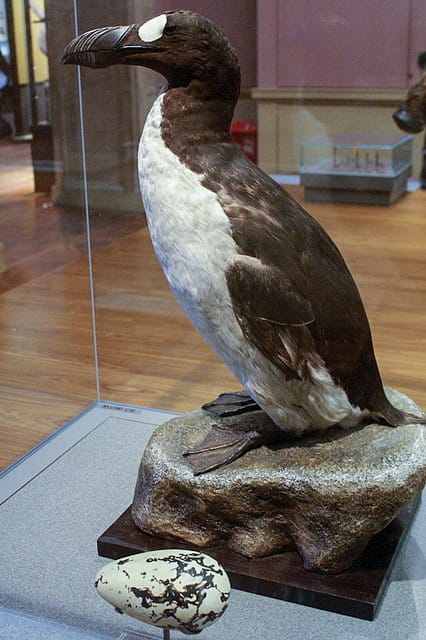
Brief History
The Great Auk (Pinguinus impennis) was a flightless bird native to the North Atlantic. It resembled a penguin but is more closely related to puffins and murres. These birds were about 30 inches tall and weighed around 11 pounds. Great Auks had small wings and were excellent swimmers, diving deep to catch fish.
Historically, the Great Auk was abundant in the North Atlantic, mostly found on rocky islands from Canada to the British Isles. Unfortunately, they were hunted down for their meat, feathers, and fat, which led to their decline.
Reason for Extinction
Many factors contributed to the extinction of the Great Auk. Some of them are:
- Overhunting: People hunted the Great Auk extensively for various purposes. Their meat was a popular food source for sailors, their feathers were used in pillows and mattresses, and their fat-fueled oil lamps.
- Egg collection: Collectors sought after their eggs, taking entire clutches from nesting sites. This led to decreased reproduction rates, further dwindling the population.
- Habitat loss: Human development and industrialization reduced their favorable nesting sites, forcing the birds to relocate to less ideal locations.
The last known pair of Great Auks was killed on June 3, 1844, off the coast of Iceland. Today, they remind us of the importance of conserving our wildlife and protecting threatened species to prevent further extinctions.
2. Baiji Dolphin
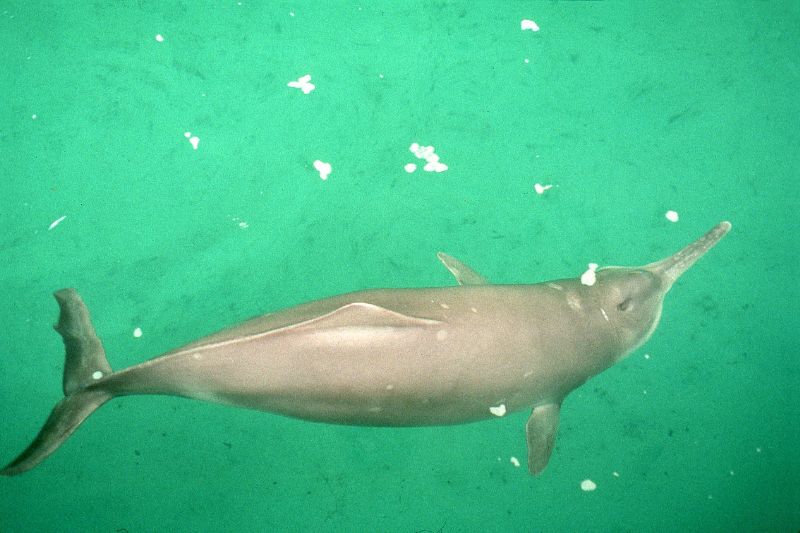
Brief History
The Baiji Dolphin, also known as the Yangtze River Dolphin, was a unique species of freshwater dolphin that you could find in the Yangtze River in China. This dolphin was known for its long, slender body and distinct beak. Historically, the Baiji Dolphin was an essential part of Chinese culture, often called the “Goddess of the Yangtze.”
As a species, the Baiji Dolphin has a rich history. Fossil records suggest that they existed for over 20 million years. They were first documented scientifically in the early 1900s. However, the population began to decline dramatically in the 20th century.
Reason for Extinction
The extinction of the Baiji Dolphin can be attributed to several factors:
- Habitat Loss: Dam construction along the Yangtze River led to a significant loss of habitat for the Baiji Dolphin. The creation of the Three Gorges Dam, in particular, caused an irreversible impact on the ecosystem.
- Pollution: The rapid industrialization in China greatly increased the levels of pollution in the river. Chemical waste, sewage, and agricultural run-off contaminated the water, severely affecting the dolphins’ health and their prey.
- Overfishing: The Yangtze River is a crucial area for fishing. As human populations grew, so did the demand for fish. Overfishing led to a drastic reduction in the Baiji Dolphin’s food sources.
- Shipping Traffic: The Yangtze River is a busy waterway. Increased shipping traffic and illegal fishing methods like electric fishing caused numerous injuries and deaths among the dolphin population.
Sadly, the last documented sighting of a Baiji Dolphin was in 2006, which led to the species being declared “functionally extinct” in 2007. Although efforts were made to conserve the species, it was too late for the Baiji Dolphin.
The loss of this unique animal serves as a reminder of the importance of conservation and the profound impacts that human activities can have on our planet’s biodiversity.
3. Western Black Rhinoceros
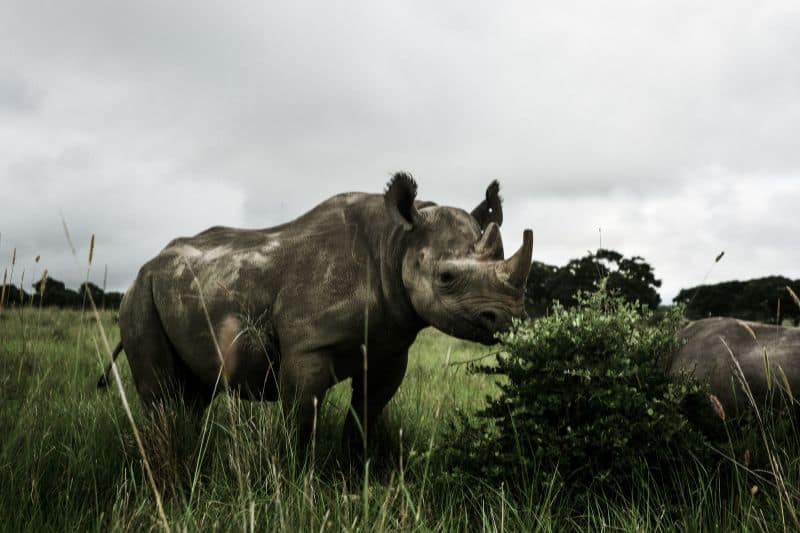
Brief History
The Western black rhinoceros (Diceros bicornis longipes) was once a common sight in Africa, roaming across various habitats, from savannas to forests. They were known for their two iconic horns, making them a poacher target. Unfortunately, their population started declining rapidly, with the last confirmed sighting in Cameroon in 2006.
Their story is one of loss, but it serves as a reminder of the importance of conservation efforts. You might be surprised to learn that black rhinoceroses were historically fairly widespread, inhabiting areas such as:
- Sub-Saharan Africa
- Eastern and Southern Africa
- Cameroon, Chad, and Sudan (specifically for the Western black rhinoceros)
Reason for Extinction
The Western black rhinoceros’ demise is largely attributed to poaching and habitat loss. The demand for their horns, believed to have medicinal properties in some cultures, primarily drove the intense levels of poaching.
Factors that contributed to their extinction include:
- Illegal Poaching: Rhino horns were in high demand, especially in traditional Asian medicine. Consequently, the Western black rhinoceros population dramatically declined due to organized poaching activities.
- Habitat Loss: As human populations grew and land was converted for agricultural and urban uses, the Western black rhinoceros lost much of its natural habitat, further reducing its numbers.
- Inadequate Conservation Efforts: Although some efforts were made to save the species, they were insufficient to reverse the downward trend.
Despite the unfortunate fate of the Western black rhinoceros, their story can serve as a powerful lesson and motivation for conserving other endangered animal species.
By understanding the factors contributing to their extinction, you can support and participate in proactive efforts to preserve remaining threatened species and prevent history from repeating itself.
4. Caribbean Monk Seal
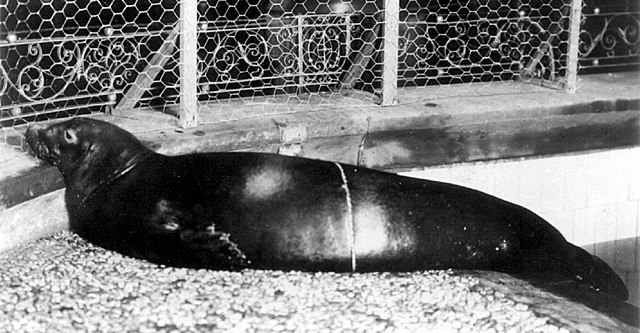
The Caribbean Monk Seal (Neomonachus tropicalis), also known as the West Indian Monk Seal, was a species native to the Caribbean Sea. Previously, you could find these seals in large groups, basking on sandy shores and shallow waters stretching from the Yucatan Peninsula to southern Florida.
Christopher Columbus first documented these seals during his journey to the New World in 1494. They became renowned for their playful nature, often approaching boats in the water. Sadly, over the centuries, their population declined significantly.
Reason for Extinction
The main reason for the extinction of the Caribbean Monk Seal was overhunting. Europeans traveling to the New World hunted them extensively for their oil, meat, and pelts. Their oil was highly valuable, as it was waterproof and rust-resistant, making it suitable for machinery lubrication.
In addition to overhunting, the seals faced other threats like:
- Habitat loss: Coastal development and human disturbance led to the loss of their natural habitat.
- Bycatch: They often unintentionally got entangled in fishing nets, causing injury or death.
- Competition for food: Overfishing decreased the seal’s primary food sources.
The last confirmed sighting of the Caribbean Monk Seal occurred in 1952. In 2008, after an extensive search, NOAA Fisheries and IUCN Red List declared them extinct. As you learn about these majestic creatures, remember the importance of conservation efforts to protect our planet’s precious biodiversity.
5. Sabre-Toothed Cat
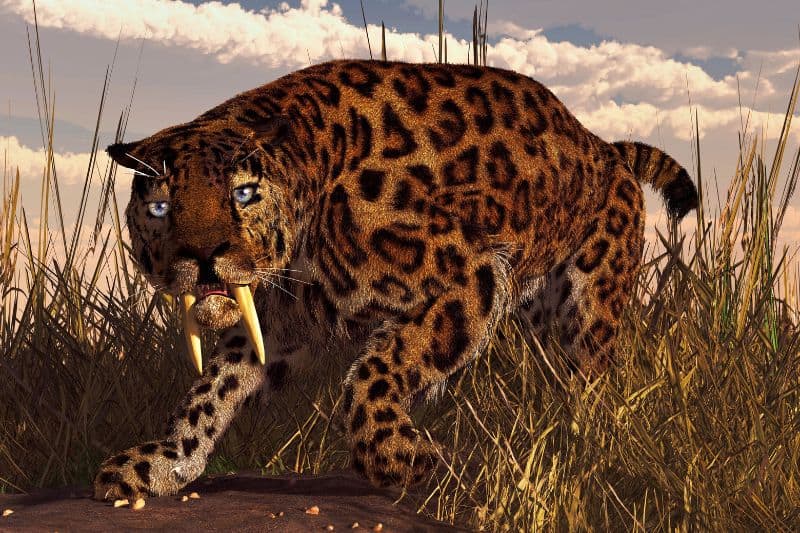
Brief History
The sabre-toothed cat, also known as Smilodon, was a prehistoric predator that lived around 2.5 million to 10,000 years ago during the Pleistocene Epoch. These fierce creatures were known for their long, curved canine teeth that could grow up to 7 inches in length.
As you may have assumed, sabre-toothed cats were carnivorous, primarily feeding on large herbivores. They had powerful limbs and were ambush predators, relying on stealth and strength to catch their prey.
Reason for Extinction
Sabre-toothed cats went extinct for a few reasons, mainly due to environmental changes and competition with other predators. The following factors contributed to their extinction:
- Climate change: The Earth’s temperature fluctuated during the Pleistocene Epoch, leading to the disappearance of the large herbivores that these cats relied on for food. With a decline in prey, the sabre-toothed cats faced food scarcity.
- Competition: As their prey numbers dwindled, competition among predators increased. Sabre-toothed cats had to compete with other carnivores, such as dire wolves, for the remaining food resources.
- Human impact: As early humans began to populate more regions, they may have had a role in the sabre-toothed cat’s extinction. Overhunting of prey, habitat destruction, and even direct conflict with these dangerous predators could have contributed to their demise.
By considering these factors, you can better understand the reasons behind the extinction of the sabre-toothed cat and the challenges faced by prehistoric species.
6. Ivory-billed Woodpecker
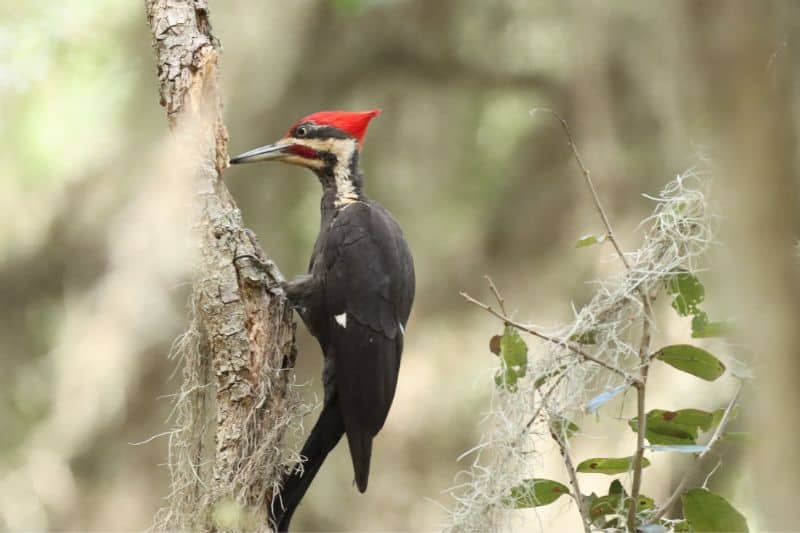
Brief History
The Ivory-billed Woodpecker (Campephilus principalis) was once a majestic inhabitant of the southeastern United States. Its striking appearance, with a large body size of up to 20 inches and a wingspan of 30 inches, made it an easily recognizable species. The bird’s black plumage with distinct white markings and a glossy red crest made it a sight to behold.
But unfortunately, your chances of spotting one today are extremely slim.
During the 19th and early 20th centuries, Ivory-billed Woodpeckers were commonly found in virgin forests of the Southeast, from Texas to North Carolina. They had particular taste for the dense swamp forests, where they foraged for food.
Reason for Extinction
The decline of the Ivory-billed Woodpecker can be traced back to several factors, mainly habitat destruction. In the early 1900s, the logging industry expanded, causing substantial deforestation of the bird’s natural habitat. As the forests disappeared, so did the woodpeckers.
It’s important to understand the bird’s specific feeding requirements. The Ivory-billed Woodpecker relied on dying or dead trees, using its powerful beak to strip bark and extract beetle larvae. As forests were logged, the availability of suitable trees decreased, and the birds were left with little to eat.
In addition to habitat destruction, overhunting posed another significant threat. Your ancestors might have considered the bird a trophy due to its impressive size and striking looks. Many woodpeckers were hunted for sport or displayed as museum specimens.
By the 1940s, the Ivory-billed Woodpecker was believed to be extinct. However, there have been a few controversial reports of sightings since then, the most notable being in 2004.
Despite these occasional claims, the bird is still considered critically endangered or likely extinct. Efforts to confirm its existence continue, but until definitive evidence surfaces, it’s best for you to assume this once-resplendent creature is gone forever.
7. Northern White Rhinoceros
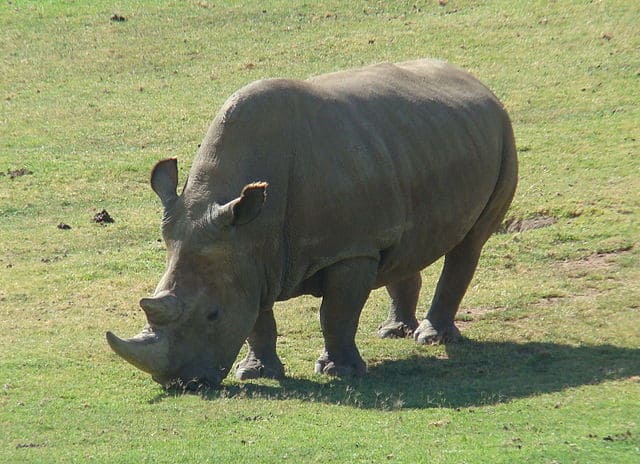
Brief History
The Northern White Rhinoceros was once known to inhabit different parts of Central Africa. You might have seen them roaming grassy savannas and open forests. These fascinating creatures were recognized for their wide mouths, helping them graze on grasses, and their distinctive features of two horns on their snouts.
Your ancestors and early explorers might have encountered these bulky herbivores while exploring Africa. These animals played a vital role in the ecosystem, influencing the vegetation by consuming large amounts of grass.
Reason for Extinction
Unfortunately, the Northern White Rhinoceros has faced a tragic decline in population, primarily due to poaching and habitat loss. Over the years, the demand for their horns has fueled the illegal wildlife trade, placing a huge target on their heads.
- Poaching: Rhino horns were perceived to hold certain medicinal properties and were considered a status symbol, eventually causing these subspecies’ extinction. As a result, you can no longer find these majestic animals in their natural habitats.
- Habitat loss: Deforestation and human encroachment on their habitat have diminished their living space, leaving them with fewer resources for survival.
Today, only two Northern White Rhinoceros females remain in captivity, and the future of this species hangs in the balance. They serve as a grim reminder of human activity’s consequences on the natural world.
8. Javan Tiger
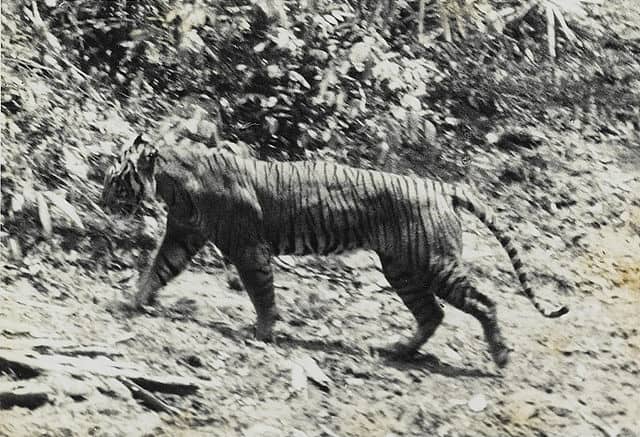
Brief History
The Javan Tiger was a beautiful and unique species of tiger that once roamed the island of Java, Indonesia. In the early 20th century, you could have spotted these amazing creatures in the lush forests.
They were known for their distinctive dark, long, and thick stripes, separating them from other tiger species. However, their population began to decline rapidly due to various factors.
Reason for Extinction
In their time, Javan Tigers faced several threats that led to their eventual extinction. Here’s a brief overview of some of the main reasons:
- Habitat loss: As human settlements expanded, the natural habitat of the Javan Tiger shrank. This left them with limited space and resources to thrive.
- Hunting: The tigers were hunted for their bones, skin, and other parts, which were used for traditional medicine and decoration.
- Agricultural expansion: Large areas of the tiger’s habitat were cleared for agriculture, reducing their hunting grounds and further fragmenting their population.
As a result of these factors, the last confirmed sighting of a Javan Tiger occurred in 1976, and the species was declared extinct by the IUCN in 2003. If you could travel back in time, you would witness a unique and majestic creature that unfortunately, has been lost to history due to human activity.
9. Pyrenean Ibex
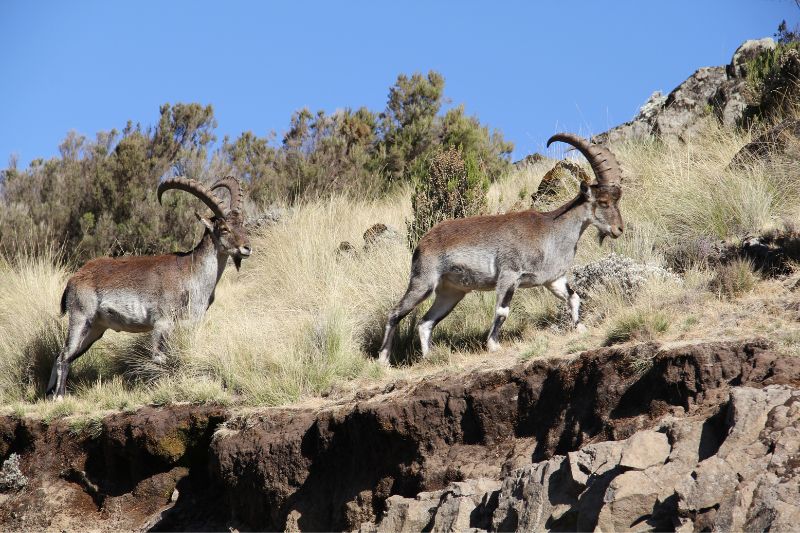
Brief History
The Pyrenean Ibex was a distinct species of wild goat that lived in the Pyrenees Mountains of France, Spain, and Andorra. These animals had a beautiful appearance, with males displaying thick, curved horns, and females having slim, arching horns. In the 1800s, thousands of these ibexes roamed the mountain slopes and meadows, living in small or large herds.
Sadly, over time, the Pyrenean Ibex population began to decline. This loss was partially driven by increased human activity in their natural habitat, such as farming and tourism.
Reason for Extinction
Two major reasons contributed to the extinction of the Pyrenean Ibex:
- Hunting: The most significant factor leading to their extinction was human hunting. They were hunted for their meat, horns, and fur, which were considered valuable. As a result, their population faced a severe decline over the years.
- Habitat Loss and Fragmentation: Expanding human settlements and infrastructure took over the ibex’s natural habitat, making it increasingly difficult for these animals to find suitable areas for feeding and breeding.
In the 1990s, conservation efforts focused on the remaining Pyrenean Ibex population to save the species. Unfortunately, the numbers were too low, and the efforts didn’t end successfully. The last Pyrenean Ibex, a female named Celia, passed away in 2000, marking the end of the species.
10. Golden Toad
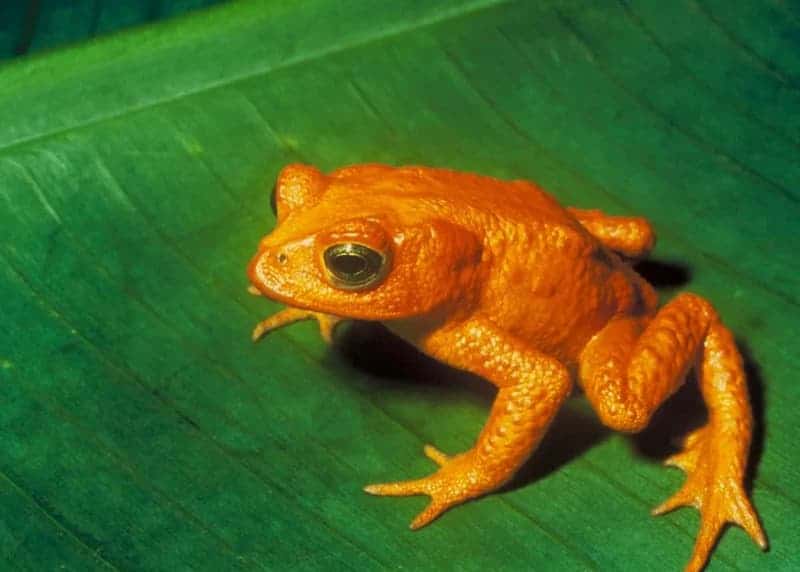
Brief History
The Golden Toad, a species once native to Costa Rica, was a brightly colored amphibian with a vibrant yellow-orange hue. It was discovered in 1966, and until the late 1980s, you could find them in the Monteverde Cloud Forest Reserve.
They were known to be a rather reclusive species, usually hiding in leaf litter during the day and becoming more active during the mating season.
Reason for Extinction
Unfortunately, the Golden Toad hasn’t been seen since 1989 and was declared extinct in 2004. Several factors led to their extinction:
- Habitat Loss: Human activities such as deforestation compromised their natural habitat, making it harder for these small creatures to find shelter and reproduce.
- Climate Change: Changes in temperature and rainfall patterns caused by global warming severely disrupted their breeding cycles. The Golden Toad relied on predictable weather patterns for mating and egg-laying, which became erratic due to climate change.
- Disease: The Chytrid fungus, a pathogen responsible for many amphibian declines worldwide, also played a role in the decline of the Golden Toad population. The fungus attacks the skin of amphibians, making it difficult for them to breathe and maintain a proper balance of electrolytes, which eventually leads to death.
As you can see, the unfortunate loss of the Golden Toad is a cautionary tale about the impacts of human activity and environmental changes on our planet’s biodiversity. Though you can no longer witness these bright amphibians in their natural habitat, let their memory serve as a reminder of the importance of conservation efforts.
11. The Spix Macaw

Brief History
The Spix Macaw, a beautiful parrot species native to Brazil, was famous for its vibrant blue feathers and graceful appearance. Sadly, it is now considered extinct in the wild.
Recognized as the rarest parrot species, the Spix Macaw captured the hearts of many bird enthusiasts. In their natural habitat, they endured the dry, thorny forests of northeastern Brazil, called Caatinga.
The first recorded discovery of this stunning bird was in 1819 by the German naturalist, Johann Baptist von Spix. Named after him, the species attracted attention from both researchers and the pet trade. Unfortunately, the Spix Macaw’s charm and rarity made it a highly sought-after commodity.
Reason for Extinction
The Spix Macaw became a victim of a tragic blend of factors, eventually leading to its extinction in the wild. Main reasons include:
- Habitat loss: Large-scale agriculture and development destroyed the bird’s primary habitat in the Caatinga forests.
- Illegal pet trade: As an attractive and rare species, the Spix Macaw was in high demand in the black market, causing many birds to be captured and sold illegally.
- Deforestation: Logging and deforestation significantly contributed to habitat loss, limiting the availability of the Spix Macaw’s nesting sites and food sources.
While it is heartbreaking to learn about the extinction of the Spix Macaw in the wild, conservation efforts are ongoing to build their population through captive breeding programs and potentially reintroduce them into their natural habitat. You can play a part by staying informed about endangered species, supporting conservation organizations, and ensuring any pets you acquire are ethically sourced.
12. Quagga
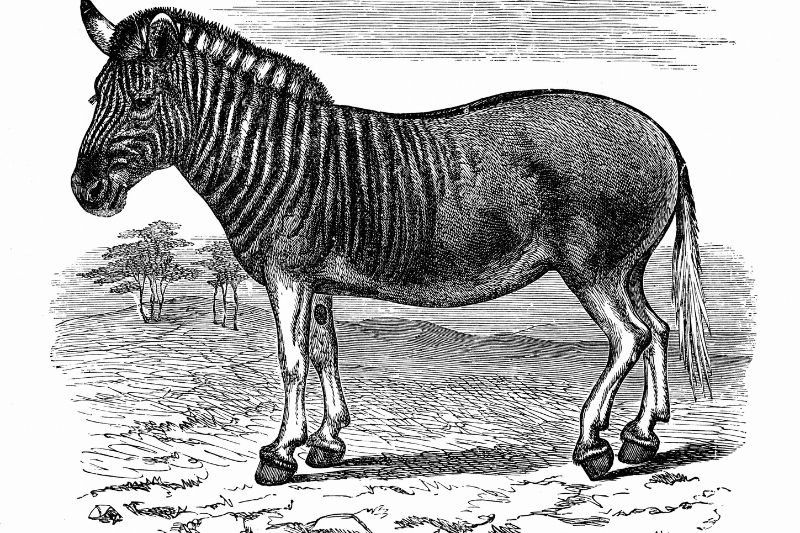
Brief History
Once upon a time, the Quagga roamed the plains of South Africa. Imagine a creature that resembled a hybrid between a zebra and a horse, with zebra-like stripes on its head and neck, fading into a plain brown body. First described by European settlers in the late 18th century, the species was a fascinating example of the diverse wildlife in the region.
Reason for Extinction
Unfortunately, the Quagga couldn’t escape the fate that many other species have faced. While it grazed alongside other antelope species, the Quagga population was heavily impacted by hunting, as settlers expanded into their habitats.
These settlers targeted the Quagga for their meat, hides, and even considered them a pest, as they would often compete with livestock for resources.
Without proper understanding or conservation management practices in place, the Quagga population dwindled rapidly until the last known individual died in captivity in Amsterdam in 1883. It’s a sobering reminder of the vulnerability of Earth’s creatures and the impact human activity can have on their survival.
13. Passenger Pigeon

Brief History
The Passenger Pigeon, once among the most abundant birds in North America, amazed those who witnessed their enormous flocks during migration. You might have had the chance to see billions of these graceful birds filling the skies, creating a captivating natural spectacle. Their enormous numbers, also known as a superabundance, was part of their survival strategy.
These birds were known for their sleek bodies, swift flight, and beautiful plumage. Unfortunately, their story took a sharp turn as they now serve as a prime example of how humans can drive species to extinction.
Reason for Extinction
The extinction of the Passenger Pigeon happened relatively fast, within a few decades. The main factors that led to their demise were habitat loss and overhunting.
- Habitat loss: As you know, humans have always been transforming landscapes to suit their purposes. Forests were cleared for agriculture and urban development, destroying the birds’ natural habitat. The Passenger Pigeon mainly nested in dense forests, and the shortage of ideal nesting grounds impacted their population negatively.
- Overhunting: Another significant factor in the extinction of the Passenger Pigeon was intense hunting pressure. Hunters targeted the birds for recreational activities and commercial purposes, selling them as cheap meat. The introduction of the telegraph and the railroad made it easier for hunters to locate and exploit the immense flocks for profit.
These factors combined led to the rapid decline of the Passenger Pigeon population. The last known individual, named Martha, passed away in captivity in the Cincinnati Zoo on September 1, 1914, marking the end of this once superabundant species.
14. Tasmanian Tiger
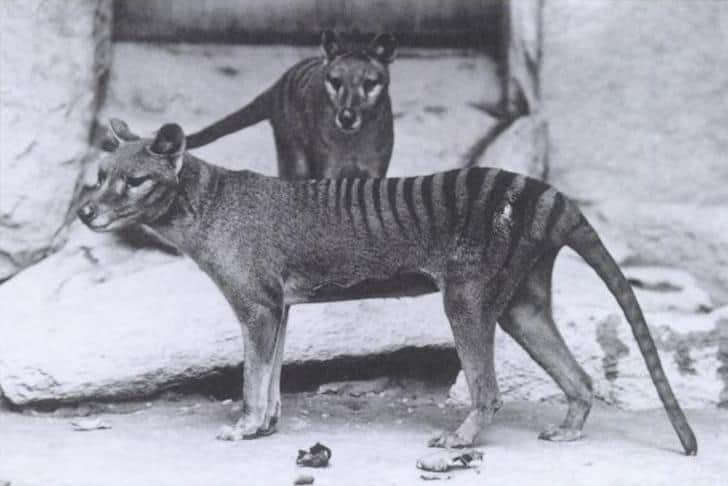
Brief History
The Tasmanian Tiger, also known as the thylacine, was a marsupial native to Australia, particularly in the island of Tasmania. Its appearance was quite unique, with a dog-like head, a pouch like a kangaroo, and distinctive stripes on its lower back. They were nocturnal hunters, feeding on small animals like kangaroos, wallabies, and birds.
European settlers first encountered the Tasmanian Tiger in the 19th century, and it quickly gained a reputation as a fierce predator. However, despite its name and appearance, the Tasmanian Tiger was not closely related to tigers or wolves but rather to other marsupials like kangaroos and wallabies.
Reason for Extinction
Unfortunately, the Tasmanian Tiger faced a rapid decline in population due to a number of factors, including:
- Hunting: European settlers believed that the Tasmanian Tiger was a threat to their livestock, so large-scale hunting commenced. Bounties were placed on them, leading to thousands being killed.
- Habitat loss: As settlers expanded across Australia, the Tasmanian tiger’s habitat was destroyed. Deforestation due to agriculture, logging, and land clearing significantly decreased suitable habitat, making it harder for the tigers to find food and shelter.
- Disease: Introducing new diseases to Australia, such as mange, likely affected the Tasmanian tiger’s population. With weakened immune systems from habitat loss and hunting pressures, these diseases could have spread rapidly through their population.
- Competition: The introduction of other predators, like foxes and feral dogs, further threatened the Tasmanian tiger. These invasive species competed with the native thylacine for food, leading to further declines in their numbers.
Benjamin, the last known Tasmanian Tiger, died in captivity at the Hobart Zoo in 1936. Despite numerous unconfirmed sightings since then, no concrete evidence has been found to suggest that the species still exists today. The Tasmanian Tiger’s story serves as a reminder of human activities’ impacts on wildlife and the importance of conservation efforts.
15. Dodo
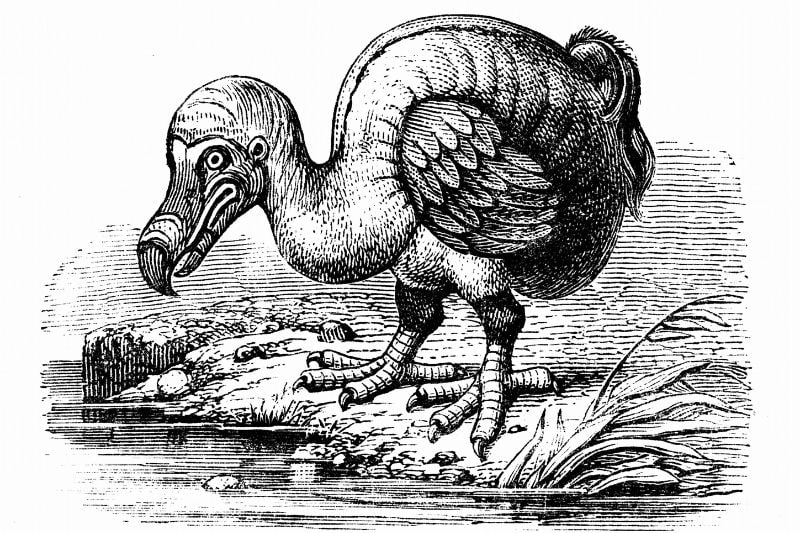
Brief History
The Dodo was a flightless bird found on the island of Mauritius. Its scientific name is Raphus cucullatus. You might have heard about it, as it is often associated with the iconic phrase “dead as a dodo.”
European sailors first discovered This species of bird in the late 16th century. The Dodo was around 1 meter (3.3 feet) tall and weighed about 10-17 kg (22-37 pounds). Sadly, now it is only seen in historical paintings and writings.
Reason for Extinction
Unfortunately, the primary reason for the Dodo’s extinction was human activity. When sailors and explorers arrived in Mauritius, they brought new predators such as rats, pigs, and monkeys that fed on Dodo’s eggs, leading to a decline in their population.
Moreover, these birds had little to no fear of humans, as they had no natural predators on the island. This made them easy targets for sailors who hunted them for food and sport.
Deforestation also played a role in their extinction. With the island’s settlement, their natural habitat kept shrinking and the unique ecosystem of Mauritius was affected. This further contributed to the Dodo’s demise.
By the late 17th century, the Dodo was officially declared extinct. Today, it serves as a constant reminder for us to protect and conserve the species that still inhabit our planet.
16. Carolina Parakeet
Brief History
The Carolina Parakeet, a brightly colored and social bird native to North America, once inhabited many parts of the eastern and central United States. They preferred forested areas near rivers, where they could find their favorite food sources, like fruit and seeds, and were the only native parakeet species in the region.
In the early 1800s, these parakeets captured the attention of ornithologists, such as John James Audubon, who documented them in his well-known “Birds of America” series. Their beautiful green and yellow plumage, as well as their friendly nature, made them highly sought after as pets.
Reason for Extinction
Unfortunately, the same beauty and character that made the Carolina Parakeet so popular also contributed to its decline. Following are some reasons for their extinction:
- Habitat loss: You may be surprised to learn that large-scale deforestation due to agriculture and the lumber industry destroyed the parakeet’s habitat and diminished their food sources.
- Human intervention: Farmers often viewed these birds as pests, as they were known to eat crops. As a result, they were hunted extensively with little consideration for their dwindling numbers.
- Trapping for the pet trade: Employing their stunning plumage and friendly nature, your ancestors may have captured and sold these birds primarily for their aesthetic appeal.
- Disease: Lastly, the introduction of domesticated birds brought with them avian diseases which could have significantly affected the Carolina Parakeet population.
Despite efforts from conservationists, the last known Carolina Parakeet died in captivity in 1918, marking the definitive extinction of this once-abundant species.
